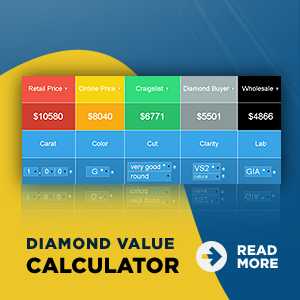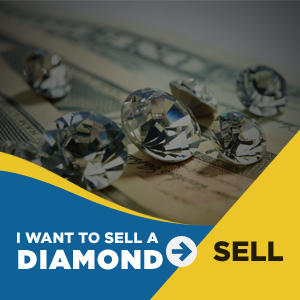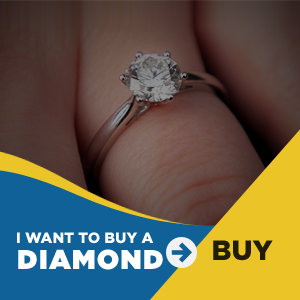For a considerable length of time, diamonds have enamored ladies and are perceived as images for status, love and allure. You likewise most likely caught wind of the truism “Diamonds are a young lady’s closest companion”. In private, I generally tell my companions (tongue in cheek) they are a person’s most noticeably awful adversary particularly on the off chance that they are amateurs in purchasing adornments.
What’s more, there’s a lot of truth in that…
Did you realize that most folks take a normal of 2 months from the beginning of their diamond search to making a last buy? In spite of having spent numerous hours doing research, a great many people still discover diamond shopping an overwhelming procedure.
Purchasing diamond gems isn’t as direct as purchasing a couple of shoes or another satchel. At the point when we are discussing a thing that can cost a large number of dollars, it is foremost that you comprehend what you purchasing precisely and making a buy just when you are 100% certain. Else, you may probably wind up with purchaser’s regret.
In this segment of the site, you will gain admittance to one of the most far reaching diamond training database on the Internet (and this isn’t an exaggeration).
Other than learning key data about the 4Cs, I will likewise tell you precisely the best way to choose and purchase the best diamond ring for your financial limit.
Cut

Diamond cut is the most significant part of the 4Cs when purchasing a diamond. It decides the measure of shimmer and fire that a diamond will show.
Along these lines, on the off chance that you need to realize how to choose an excellent looking diamond rather than a dull looking one, you’ve gone to the ideal spot!
In this segment, you are going to discover what is diamond cut and why it makes a difference when you are looking for a wedding band. You are likewise going to get the genuine bits of knowledge to choosing admirably cut diamonds and how to isolate the goods worth keeping from the waste.
How about we begin…
What is Diamond Cut?
Basically, cut alludes to how well a diamond’s features cooperate with light. A very much cut diamond will show predominant brilliance, fire and shine contrasted with one that is ineffectively cut.
There are 3 principle characteristics that influence the diamond’s general cut quality. They are:
Extents: The points and relative estimations of a cleaned diamond.
Evenness: The accuracy of a completed diamond’s shape and aspect situations.
Clean: The general state of the diamond’s aspects surfaces.
Numerous individuals regularly confound cut to be equivalent to a diamond’s shape. They aren’t something very similar and it doesn’t enable that numerous gem dealers to utilize these 2 terms conversely.
Carefully, shape alludes to the diagram a diamond has (for example heart and pad) while cut alludes to a joined part of a diamond’s extents and completing (evenness/clean).
Carat Weight

With regards to purchasing a wedding band, carat weight is regularly seen as the most significant criteria in choosing a diamond.
Be that as it may, what does a 1 carat diamond truly mean when you hear individuals saying it to portray a ring? Does a diamond with a greater carat weight consistently seem bigger?
Actually, one carat is equivalent to 200 milligrams or 100 focuses. In the event that you obtained a 1 carat stone, it implies that you had gotten yourself precisely 0.2 grams of diamond.
Presently, in the event that you resemble numerous others, you may be asking why a diamond’s weight is estimated regarding carats. Isn’t the utilization of SI units like the kilogram or its subordinates more qualified to portray the weight of something so costly?
Why not the utilization of ounces; which is a unit of estimation we know about from regular applications?
All things considered, the history behind this is quite intriguing. The word carat really begins from carob; which alludes to a beetle tree that produces palatable units. Carob seeds, being even in weight, were utilized as gauging references by merchants in the days of yore.
Keep in mind, this was when innovative gauging machines were non-existent. In those days, one carat was equivalent to the weight of one carob seed and exchanges were made dependent on this basic estimation.
As you could have envisioned, carob seeds fluctuated in sizes and everyone was utilizing various references relying upon which some portion of the world you are in. Harking back to the 1890s, on the off chance that you purchased a “one-carat” diamond, the weight could really fluctuate anyplace between 0.94 to 1.06 metric carats!
That is a colossal measure of vulnerability considering the enormous wholes of cash paid for a solitary stone.
Much has changed since old occasions. While exceptionally delicate electronic gauging gear has supplanted the carob seeds, the industry stayed with the phrasing of utilizing carats to portray the weight of a diamond.
Truly gem dealers realize diamonds sell for more when they go pass certain sizes. It is no fortuitous event that most of diamonds in the market are cut to hold however much harsh weight as could reasonably be expected to the detriment of splendor and excellence.
How regularly have you seen stones that gauge 0.48 or 0.98 carats? By structure, such stones are uncommon peculiarities since they fall beneath the “enchantment estimates” that can get more cash.
Rather, what you would watch is that the greater part of the stones would generally be cut to decent figures like 0.50 or 1.00 carats. More often than not, this is finished by trading off cut quality as the cutters endeavor to keep however much unpleasant as could be expected.
So, don’t become overzealous with picking the greatest stone that you can discover. This is one of the most well-known but then, gravest missteps that some first-time purchasers make. What goes before an emphasis on the carat size of a diamond ought to be a thought of different elements like cut, shading and clarity too.
Clarity

Did you realize that diamond clarity is the most misconstrued factor with regards to the 4Cs? Truth be told, the vast majority expect that a high clarity grade is required for better shimmer and to maintain a strategic distance from eye noticeable considerations.
The fact of the matter is a long way from that.
In this area of the site, you will gain proficiency with the specialized parts of what diamond clarity is and what it isn’t. I am likewise going to uncover experiences on what to search for in a diamond and how you can set aside a ton of cash by shopping keen.
Diamond clarity is a subjective evaluation of the imperfections present in a diamond.
Fundamentally, the imperfections can be grouped into 2 kinds of classifications relying upon where they are discovered; flaws (outer blemishes like scratches and chips) and considerations (inside defects like pinpoints and precious stones).
Clearly, the lesser measure of imperfections a diamond has, the higher the clarity evaluation and worth it has.
With regards to purchasing a sparkly diamond wedding band, numerous amateurs just take a gander at the 4Cs and the reviewing scales/graphs to settle on a buy choice.
The greatest misinterpretation and slip-up that first-time customers make is to accept that high clarity (for example Inside Flawless) and high shading (for example D rating) are required for a diamond to be excellent and sparkly.
Color

With regards to picking a diamond, shading is one of the key qualities that most shoppers take a gander at. Truth be told, there is a typical misinterpretation that diamonds with higher shading grades show better splendor and shimmer.
The fact of the matter is a long way from that.
What is Diamond Color?
In nature, diamonds are found in pretty much every shading and tint you can envision; dark, white, yellow, red, green, pink and darker. In spite of mainstream thinking, it is in reality exceptionally uncommon to discover a diamond that doesn’t have any shading whatsoever.
With regards to evaluating shading, GIA had formulated an arrangement of portraying diamonds in the typical range with letters from D (boring) to Z (light dark colored or yellow). On the off chance that the force of shading in a diamond is more grounded than a Z, at that point the extravagant shading evaluating framework is used.
How is Diamond Color Graded And Why It Matters?
Pretty much every diamond sold in the market today is evaluated utilizing the GIA shading scale, paying little respect to whether it is reviewed by the GIA or not.
During the reviewing procedure, the free stone is flipped over by a prepared gemologist and examinations are made against a known arrangement of masterstones. At the point when the diamond is seen looked down, the shading contrasts will be the most self-evident.
Taking a gander at the diamond thusly additionally lessens the interruptions brought about by inside and surface reflecting features. At long last, for exact reviewing to occur, it is constantly done in a controlled situation with impartial lighting to guarantee consistency.
All things considered, the diamond is mounted face up in a setting and it would be very hard for undeveloped eyes to get unobtrusive contrasts in shading. I will talk about this in detail on later pages and tell you the best way to purchase diamonds that face up white without burning up all available resources.
Diamond Colors According to the Diamond Color Scale Chart
There are five fundamental classifications on the GIA diamond graph and shading grades that range from totally vapid to daintily tinted. D shading diamonds are very uncommon and the “whitest” grade that cash can purchase.
As you go down the shading scale, the shading tint turns out to be progressively perceptible. How about we take a more indepth take a gander at the absolute most famous shading classifications you will go over when looking for a wedding band.
On the off chance that you are keen on a specific shading grade, don’t hesitate to tap on the relating connect to peruse a definite expound up on the shading rating.
Boring Diamonds (D, E, and F)
The boring class is comprised of 3 evaluations: D, E and F.
To the unaided eye, every one of the 3 shading grades seem cold white and appear to be indistinguishable. As a prepared diamond grader with long periods of experience, even I can’t recognize a D or F shading diamond outside of lab conditions.
Due to their white appearances, they are usually set in platinum or white gold instead of yellow gold or rose gold. This is because colored settings would reflect color and negate the diamond’s colorless effect.
Near Colorless Diamonds (G, H, I and J)
The near-colorless category is made up of 4 grades: G, H, I and J.
Near colorless diamonds contain traces of color in their body when they are viewed face down. Once the diamond is mounted on a ring setting, the faint hue is extremely difficult to detect for a layman.
Near colorless diamonds are the most popular range of selections when people shop for engagement rings because they are much more affordable and offer good value for money.
G-J diamonds are suitable for both platinum and white gold settings and face up white if they are well cut. They are also very versatile and can be paired with yellow gold or rose gold as well.
Faint Color Diamonds (K, L, and M)
The faint color category is made up of 3 grades: K, L and M.
Faint color diamonds show a hint of color that can be noticeable to the naked eye in the face-up position. For people who like a warmer appearance or want to buy an antique style ring, K-M diamonds offer fantastic value for money while complementing the appearance you are looking for.
K-M diamonds are usually used in vintage style settings and yellow gold ring designs. Due to their perceptible color tint, they cost significantly less compared to the price of a colorless diamond.
Why is Diamond Color an Important Consideration?
From a technical perspective, it comes down to the behavior and physics of light when it passes through different mediums. Colored diamonds (e.g. black, brown, gray) can negatively affect light absorption and in turn, affect the sparkle displayed by the diamond.
In lower colored diamonds like those found in the very light or light yellow category, the body tint of the diamond may change the “true color” of its brilliance and fire as light passes through it. This is a subtle effect and isn’t easily seen at higher color grades.
That is why white (colorless) diamonds are commonly used in jewelry as they have better reflective qualities compared to brown or dark-colored diamonds. Of course, the exceptions to this rule are the extremely rare and highly sought after colors of pink, red, blue and orange.
The other reason why diamond color matters when consumers shop for engagement rings is largely a psychological one.
In many societies, there is a stigma that lower colored diamonds are poor quality and “ugly”. In fact, paying a premium for colorless diamonds gives the recipient bragging rights and allows them to show off their societal status.
As a result, many consumers place their priorities in the wrong Cs and end up paying a lot more for features that their eyes can’t see. In my opinion, CUT is the most important diamond quality you should pay attention to.
Why? Well, having better cut quality means that the diamond has better light return, sparkle and proportions. This directly improves the face-up size of the diamond due to better edge-to-edge brightness (looks bigger!).
As a result of better light performance, clarity flaws and color tints are easily hidden by the sparkle and this can make a lower color/clarity diamond look identical to another diamond with higher color/clarity!







